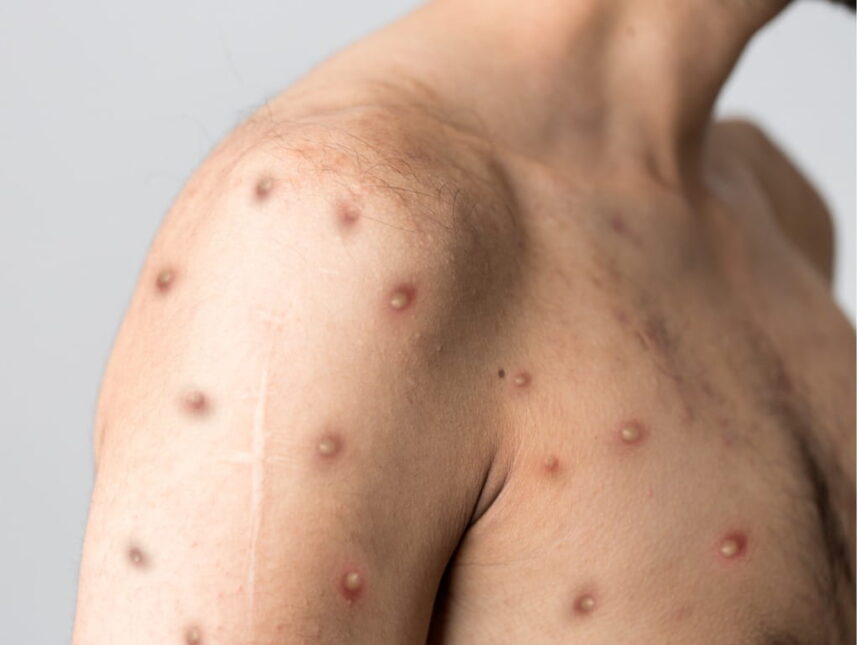Monkeypox: Symptoms, Transmission, Prevention, and Treatment
What is Monkeypox?
Monkeypox is a viral disease caused by the monkeypox virus, a member of the same family of viruses that includes the smallpox virus. Although it is called monkeypox, the virus is not restricted to monkeys—it can affect humans and other animals such as rodents and primates. First identified in 1958, monkeypox outbreaks have predominantly occurred in Central and West Africa, but recent years have seen the virus spread to other regions, including Europe, North America, and Asia.
Symptoms of Monkeypox
Monkeypox symptoms usually appear within 5 to 21 days after exposure to the virus, known as the incubation period. The illness typically begins with:
- Fever
- Headache
- Muscle aches and fatigue
- Swollen lymph nodes
- Chills
These early symptoms resemble those of flu or other common viral infections, but monkeypox has a unique characteristic: it causes a distinct rash. After a few days of fever, the rash develops, typically starting on the face before spreading to other parts of the body, including the palms of the hands and the soles of the feet.
The rash begins as flat red spots that evolve into raised bumps, which then fill with clear fluid. Over time, the bumps become pustules, and eventually crust over and fall off. The entire illness usually lasts for two to four weeks. Although monkeypox is generally mild, some cases can lead to severe complications, particularly in individuals with weakened immune systems, children, and pregnant women.
How Does Monkeypox Spread?
Monkeypox spreads primarily through close contact with an infected person or animal, or through contact with contaminated objects. The virus can enter the body through broken skin, the respiratory tract, or the mucous membranes of the eyes, nose, or mouth. Here’s how transmission occurs:
- Person-to-Person Transmission: Monkeypox can spread through respiratory droplets during prolonged face-to-face contact, or through direct contact with bodily fluids, lesions, or scabs. It can also be spread through sexual contact.
- Animal-to-Human Transmission: Humans can contract monkeypox by handling infected animals, eating undercooked meat, or getting scratched or bitten by an infected animal.
- Contaminated Objects: Bedding, towels, or clothing that have come into contact with infected lesions or bodily fluids can also harbor the virus.
While monkeypox is not as contagious as some other viral diseases like COVID-19 or measles, it is still important to take precautions if you suspect you have been exposed to the virus.
Prevention of Monkeypox
Preventing monkeypox requires a combination of personal hygiene, safe practices, and awareness of potential exposure. Here are some key tips to reduce the risk of infection:
- Avoid Contact with Infected Individuals or Animals: If you are aware that someone has monkeypox, avoid close contact until they have fully recovered. This includes refraining from touching their skin, clothing, or other personal items.
- Use Protective Measures: If you work in healthcare or care for someone with monkeypox, wear personal protective equipment (PPE) such as gloves, masks, and gowns to reduce the risk of transmission.
- Practice Good Hygiene: Frequent handwashing with soap and water, or the use of alcohol-based hand sanitizers, can help prevent the spread of the virus. Avoid touching your face, especially the eyes, nose, and mouth, without cleaning your hands.
- Get Vaccinated: While the smallpox vaccine provides some protection against monkeypox, new vaccines specifically targeting monkeypox have been developed. Consult with a healthcare provider about vaccination, particularly if you are at high risk.
Treatment for Monkeypox
There is no specific antiviral treatment for monkeypox, but supportive care can help manage symptoms. Treatment generally focuses on alleviating discomfort and preventing complications. Common recommendations include:
- Pain and Fever Management: Over-the-counter pain relievers and fever reducers such as ibuprofen or acetaminophen can be used to alleviate symptoms.
- Hydration and Rest: Staying hydrated and resting are critical for recovery.
- Wound Care: For the rash, keeping the affected areas clean and dry can help prevent secondary infections.
For severe cases, antiviral medications developed for smallpox, such as Tecovirimat (TPOXX), may be used under certain circumstances, as it has shown some effectiveness against monkeypox. Additionally, healthcare providers may recommend hospitalization if complications arise.
Final Thoughts
Though monkeypox is generally less severe than smallpox, it is still a disease that requires vigilance. Awareness of the symptoms, routes of transmission, and preventive measures can significantly reduce the risk of infection and help control outbreaks. If you suspect you have been exposed to monkeypox or are experiencing symptoms, seek medical attention promptly.
Stay informed and proactive in protecting yourself and others from the spread of monkeypox.
Source: infraser.ro







